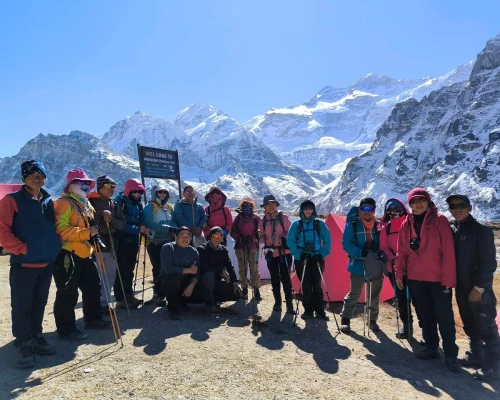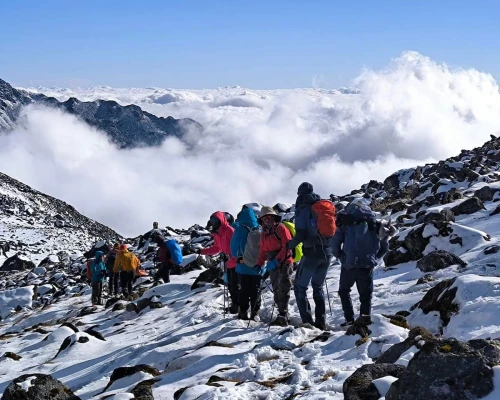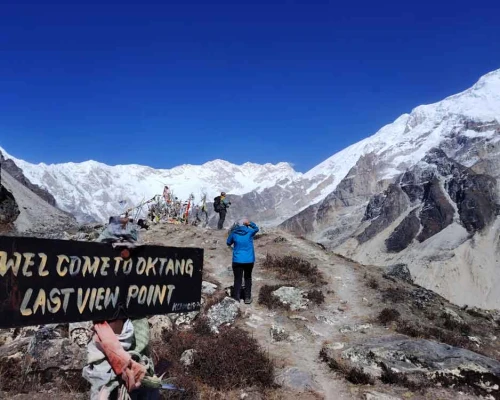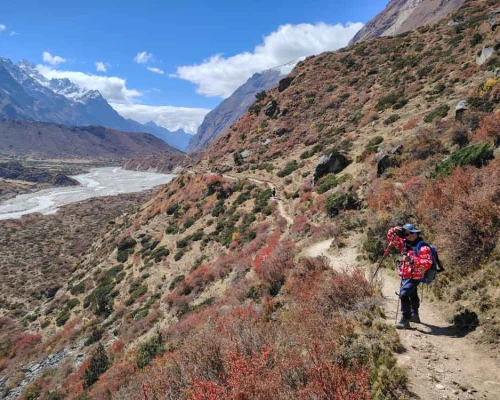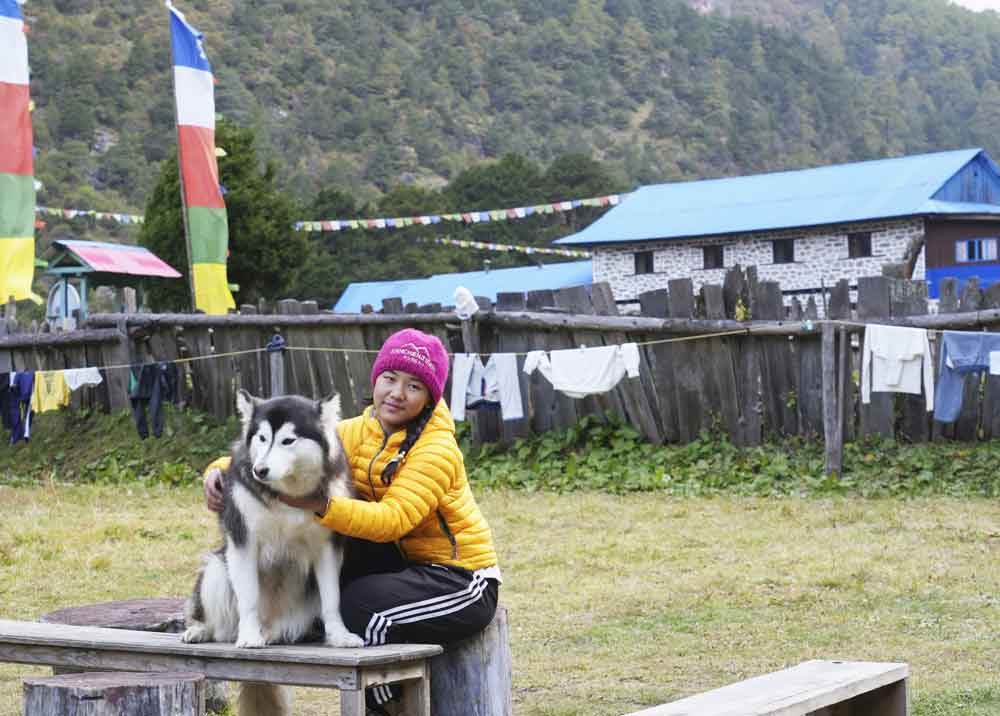Kanchanjunga North Base Camp to the South Base Camp 21-day Circuit Trek

Mt. Kanchanjunga 8,586m, is the second-tallest mountain in Nepal and 3rd Mountain in the world. The Kanchanjanga region trek is in the eastern part of Nepal. This region was opened only in 1988 for trekking. It is the source of the Arun River, which is one of the most popular and beautiful valleys for trekking through lush, low-lying valleys and up through incredible forests and into the high alpine pastures and glaciers landscape at the bottom of Kanchenjunga. Around this region, we enjoy an opportunity to experience the traditional culture of Rai, Limbu, Sherpa, Tibetan, and so many other types of ethnic groups in perfect harmony. Trekking in this area is an adventure that is full of enthusiasm, excitement, and above all, an unforgettable life experience. You will have the amazing opportunity to view/ explore the mountains, the wonderful rocky landscape, and the sloping hills.
The Kanchenjunga area is protected by the Kanchenjunga Conservation Area Project (KCAP), which is spread over an area of 2,035 sq. km. The Kanchenjunga area project is protecting varieties of flora, Fauna, and endangered animals.
Despite its stunning natural beauty, the Kanchenjunga region has remained off the radar of most trekkers, given its remote location and lack of infrastructure. In recent years, teahouses have been opened up in the villages and other convenient locations along the trail. This means that small groups can now trek here more affordably, and payment for accommodation and meals goes directly to the local economy.
Note that the trail is narrow and the teahouses are still simple; relatively few trekkers visit this remote area. The Kanchanjunga region trek is still in a primitive stage, so the food and accommodation are very basic. But you will experience real Nepal in all its diversity of cultures and landscapes.
There is essentially one main trail to trek from the northern to the southern Kanchanjunga base camp. That is called the Kanchanjunga Circuit trek. The route goes via North Kanchanjunga Base Camp first and returns to Ghunsa along the same way back, then climbs up to the beautiful pass. This route might be more comfortable for the trekkers due to the appropriate acclimatization at high altitude and moderate climbing. The trek from Southern Base Camp to Northern Base Camp is comparatively tough and strenuous. Thus, our recommendation is to go via a clockwise route.
The treks return to Ghunsa from Northern Base Camp, then cross five impressive passes, including the famous Se-Le-Le pass (4290m), and descend to Cheram. The trail crosses numerous ridgelines, landscapes with incredible views of the Himalayas, lush forests, hot temperatures, and farmland ascending and descending to the ending point of your trek.

Permits & Regulations:
Kanchenjunga Conservation Area Project (KCAP) Entry Permit: Costs around NPR 2,000 per person.
Restricted Area Entry Permit (RAP): Costs USD 10 per person per week. This permit must be processed through a registered local trekking agency in Nepal and requires a minimum of two trekkers in a group.
Best Time to trek into the Kanchanjunga
The ideal seasons for Kanchenjunga trekking are spring (March to May) and autumn (September to November).
Spring (March - May): Offers pleasant weather, blooming rhododendron forests, lush greenery, and a chance to spot wildlife. Temperatures in the lower regions are around.
Autumn (September- October): Features stable weather, clear skies, and excellent visibility for stunning mountain views. The air is crisp and clean after the monsoon, making for great photographic opportunities.
We do not recommend these seasons:
Monsoon (June to August): Heavy rains make trails slippery and prone to landslides.
Winter (December to February): The temperature in winter is extremely cold, and there will often be heavy snowfall, which makes the trek difficult and hazardous.


